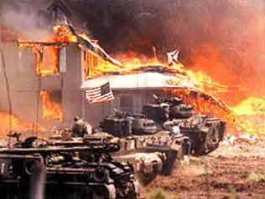August of 2019 will mark 400 years since the first documented arrival of Africans who came to English America by way of Point Comfort, Va. The legacy of slavery and racism in the United States is deeply embedded in the history of the Commonwealth of Virginia.
Virginians are at a ripe moment for deep cultural, political, economic, and social change. But to harvest that moment we need to ask ourselves, “What does it mean to ‘do the right thing’ when we learn that the Democratic Governor of Virginia (Ralph Northam) participated in a culture that condoned the donning of blackface and KKK outfits at parties during medical school?” At a minimum, a picture documenting that practice appears on his page in the medical school yearbook. At worst, he was in a photo dressed either in blackface or as a member of the KKK. And the Democratic Attorney General has come clean about donning blackface at age 19 while dressing up as a rap star he admired.
In the 1940s Gordon Allport introduced that idea that Whites in America projected negative attributes such as laziness, emotionality, promiscuousness, incivility, stupidity, and criminality onto other social groups — often onto African Americans and other communities of color — in order to appease their guilt about their own behaviors. This process known as racial scapegoating is an American pastime.
But, as Dr. David St. John points out another form of racial scapegoating has gained traction in recent decades. It is particularly popular among White liberals. St. John, was discussing the uproar that followed the revelation that the owner of the L.A. Clippers (Don Sterling) and the anti-government rancher Cliven Bundy used extremely offensive racial epithets and held openly racist beliefs.
“In a country where Persons of Color are routinely denied fair access to education, housing, health care, and employment; where African-Americans, Native Americans, and Latinos are systemically exposed to unjustifiable rates of school expulsions, arrests and prison incarcerations; and where most White Americans either deny that such institutional racism exists, or shrug off such evidence with snarky little statements like ‘life isn’t fair,’ is it any wonder that we find it irresistible to scapegoat such easy targets of racism as Sterling and Bundy? Every few years, when the opportunity presents itself, White Americans—liberal and conservative, Republican and Democrat, educated or not—rally around an effigy of White racism, light a match, and sigh in relief of our virtue.”
So, what is the “right thing” in Virginia in 2019? How do we hold Northam and Herring accountable without avoiding this opportunity to name, examine, and change the racist systems and institutions that are foundational to the way of doing politics and organizing our economic and social systems?



 Degree Completion Program.
Degree Completion Program.



